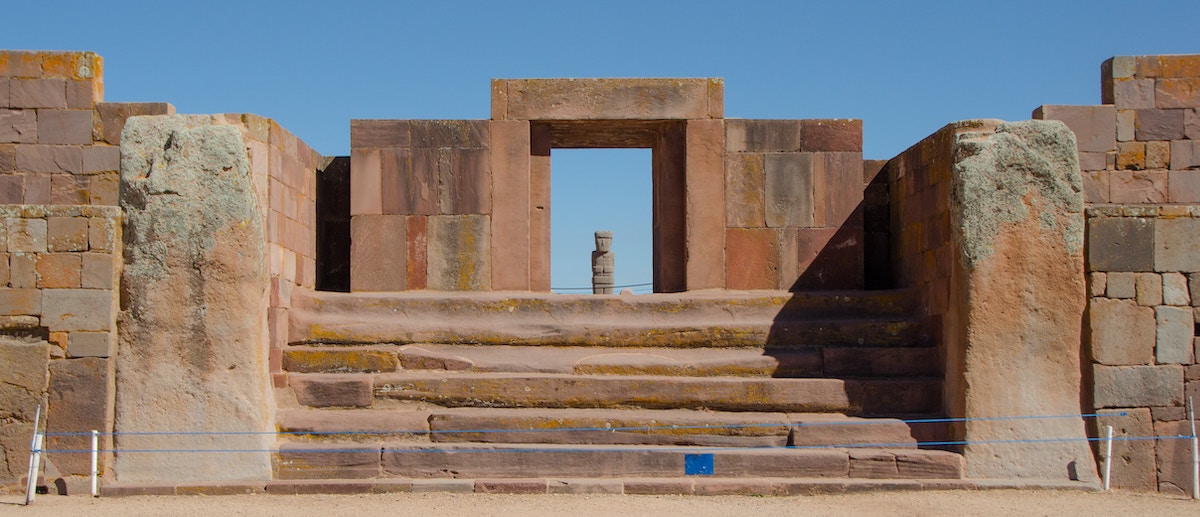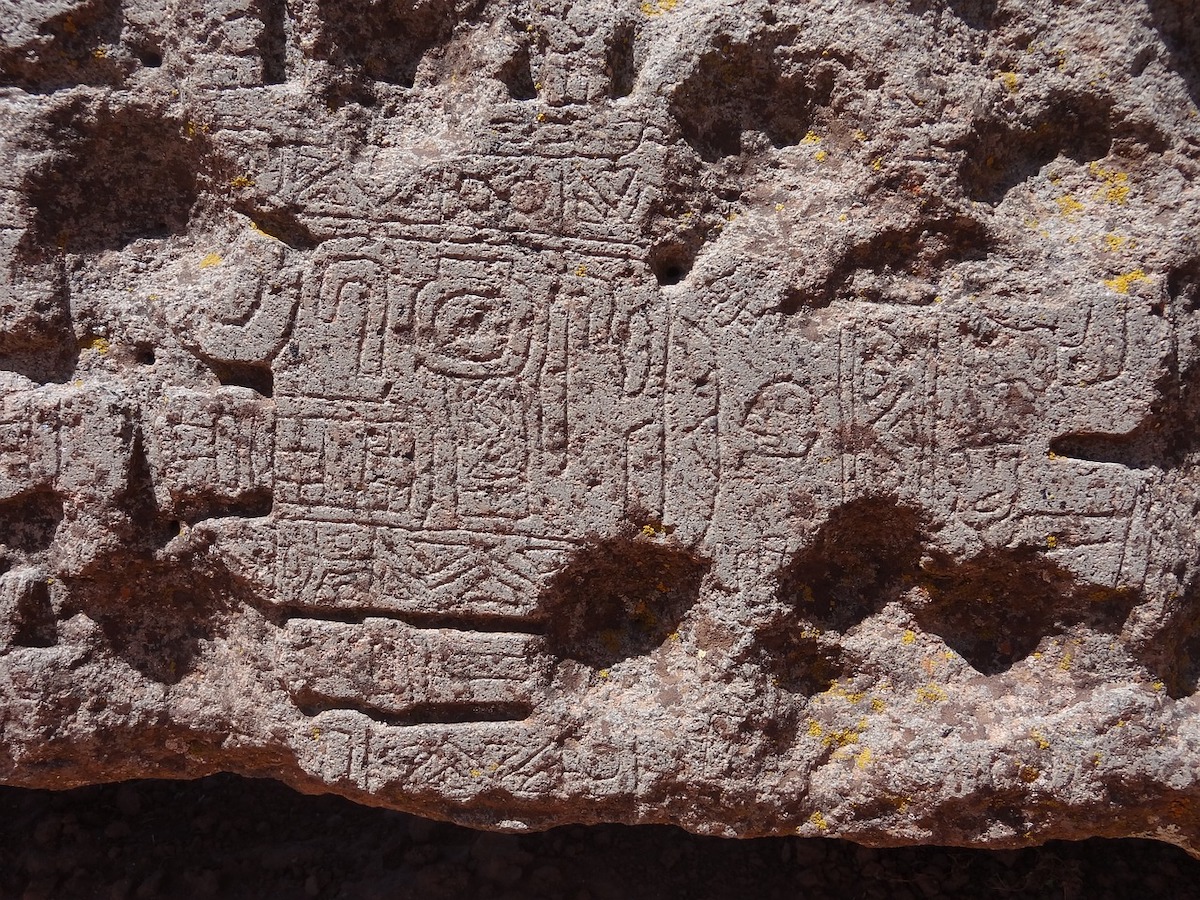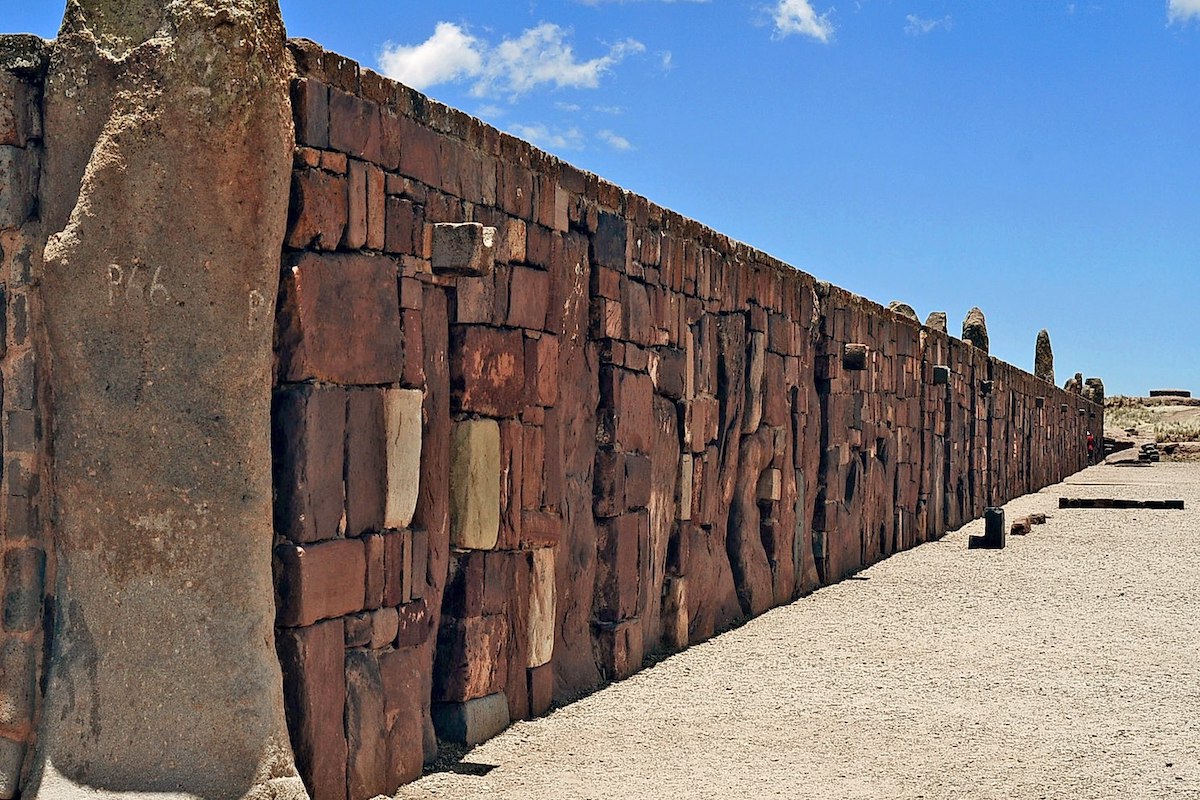By: Heather Keys
Located near the southern edges of Lake Titicaca, Bolivia lie the ruins of Tiwanaku. This powerful pre-Incan society lived here between 500 and 1000 CE, and were known for their innovative agriculture as well as their vast governing territory that extended throughout present-day Bolivia, Peru, and Chile.
Let’s learn a little about Tiwanaku’s archaeological sites!

Photo by David Torres on Unsplash
Akapana Pyramid
This 17-meter-high terraced pyramid held astronomical, ceremonial, and religious importance for the Tiwanaku civilization. It’s believed to have been an observatory, charting celestial events. Its seven tiers and central sunken court may have been meant for ritual use, with theories suggesting a vital role for water in these ceremonies.
Kalasasaya Temple
This rectangular fortress, Kalasasaya has a sunken courtyard flanked by walls engraved with stone friezes and monoliths. These carvings depict a spectrum of anthropomorphic figures and stylized creatures. Inside, you can see the Fraile and Ponce Monoliths.
Gateway of the Sun
This single-piece stone archway created from andesite stands 3 meters tall and contains bas-relief of deities. At its center is Viracocha, the supreme creator god in Andean mythology. The archway’s sun alignment during certain times of the year suggests an astronomical and calendrical function.

Image by mgarciaturismo from Pixabay
Semi-Subterranean Temple
This partially-buried temple’s walls are studded with stone monoliths decorated with human faces. Each face is unique, and this temple is thought to have witnessed agricultural and fertility rituals.
Puma Punku
A short distance from Tiwanaku, Puma Punku is an archaeological site where you can see superior stone-cutting techniques and interlocking block construction. The site’s layout appears to represent the cosmos, its central courtyard embodying the celestial sphere.
Want to read more about exploring archaeological sites? Check out our guide to archaeology volunteer trips!
About the Author
Heather is a freelance writer who loves exploring the intersection of travel and history. Read her other articles on Frayed Passport here.
Featured image by LBM1948 on Wikimedia Commons.

